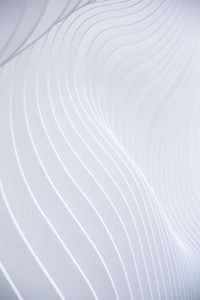I recently wrote a small post on my blog titled “How Computer Monitors Affect Color”. It describes how color is displayed on computer monitors and how this can affect the colors that you see in photographs and illustrations. I’ve received some inquiries from various artists asking for help with their own monitor setups, so I thought I would expand on my original post here. This is kind of a long post, but if you are a serious artist using a computer for your art then it’s worth taking the time to read through it.
The Monitor:
One of the most important things to understand about computer monitors is that they are not “color accurate” by default. Instead, they are generally calibrated to be as bright and vibrant as possible, because consumers like vivid colors. A box of crayons that looks nice when you open it may look dark and muted when opened in front of a typical monitor (though this will depend on the type of crayon). There are a few reasons for this, but one of the most important has to do with gamma.
Color is a powerful tool in many different forms of art, and each medium has its own qualities that can enhance the effect of color. Artists use this to their advantage, using colors to help them convey emotion and other aspects of the message they are trying to express.
Tints and Shades
However, it is important to note that not all colors are created equal. Some colors may be more intense than others, or have other qualities that make them more useful in expressing the idea or story being told by the artist. This is where computer monitors come into play. The colors displayed by computer monitors may or may not be a true reflection of the color of an object. This means that it’s possible for a shade of blue to appear different on a computer monitor than it does in real life.
The Importance of Color Calibration
Color calibration ensures that what you see on your monitor is what everyone else will see on their monitor when viewing your work. You can get a good idea about how well calibrated your monitor is by printing out images from your computer and comparing them with the original image on your screen. If you notice any differences between the two, then chances are there are issues with your monitor’s calibration.
If you’re looking for a way to calibrate
It’s not just the color on a computer screen that is different from the real thing. A computer monitor also uses light in a very different way, and this affects what you see, too.
A monitor is basically a TV set. It sends out light from many different directions, so that one small picture fills your entire field of view. That’s why it looks flat.
A TV camera creates just one picture per scene, and a computer screen reproduces that effect for us directly by sending out light from only one direction. So everything on the screen appears to have dimensionality. That’s why it appears to have three dimensions when you look at it straight-on. If you look at a single dot on the screen from an angle, though, you’ll see that it has no dimensionality at all and looks like a flat surface instead of a solid object.
Trying to render dimensionality onto a computer screen is difficult, but artists are used to working with two-dimensional spaces anyway, so it’s not too hard to get used to.
The science of color is more complicated than you might think. It’s a common misconception, for example, that the eye “sees” color by detecting the visible spectrum. Actually, the light from a given object stimulates three kinds of photoreceptors in our eyes: red, green, and blue. These are processed into what we perceive as color by the brain.
Trouble is, our brains aren’t very good at processing colors outside of a narrow range of intensities. If you want to see how this works, look at any color image on your computer screen and then look at it with a magnifying glass. You’ll see lots of tiny dots — the pixels. The big problem with computer monitors is that they display only a limited range of intensities for each primary color. The highest intensity we can display for red is not very much brighter than the lowest intensity we can display for green or blue. That means there are places in any image where different parts are brighter than others — one spot might be 30% brighter (or darker) than another spot just next to it. Because our brains need to compensate when they compare brightnesses between two pixels that are next to each other but don’t have exactly the same color, this can create weird visual effects
I’ve spent more than 15 years as a professional colorist for print and video. The single biggest challenge I hear from my colleagues is working with people who have uncalibrated computer monitors. This is the reason behind that challenge.
To understand the problem, you need to understand what happens when you view a color on a computer monitor. The first thing to realize is that your monitor doesn’t display color like your eyes do. Your eyes use what’s called a “three cone system.” There are three types of cones in your eyes, each sensitive to red, green and blue light. Each cone has its own pigment, so it can only be stimulated by light of a particular wavelength. When you mix all three types of light together, you get white light. When you mix red and green light together, you get yellow; when you mix red and blue together, you get magenta; and when you mix all three colors together, you get white again.
Color on computers works differently. There’s no mixing involved because there’s no pigments in your monitor screen. Instead, the screen is covered with tiny little dots called pixels (short for “picture element”). On most screens those dots are all either red or blue or green. Red plus green makes yellow;
Each pixel on a computer monitor is composed of three separate digital color samples, one for each of the red, green and blue primary colors. Each sample is composed of a number in the range 0 to 255. The combination of all three samples at each point on the screen produces the color you see there.
The numbers are stored in the display hardware as 8-bit binary numbers, meaning that their values can only be 0 or 1. The value of each sample determines how much of that primary is reflected or transmitted. A value of 0 represents no light, while a value of 255 represents all the light that can be produced by that primary at that particular point on the monitor surface (a certain amount is always lost due to glare and reflections).**For more information on how monitors work, check out Howstuffworks.com’s article on computer monitors**
I’ve wanted to write this post for a while, but I’ve been putting it off because it’s complicated. Color management is a huge topic. My goal here is not to give you the full rundown on color management, but rather to give you enough information so that you can assess whether color-managed workflow is right for you.
Tone:informative and factual


